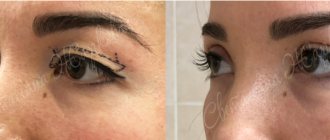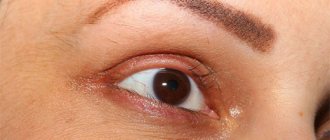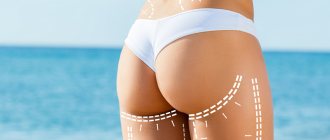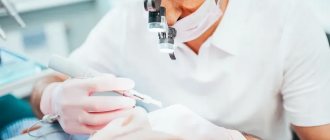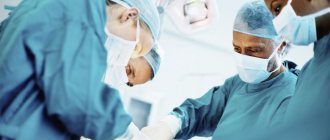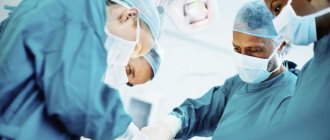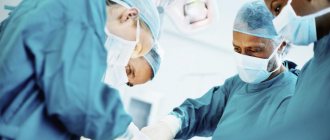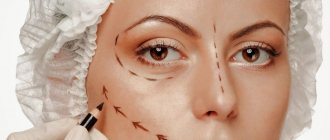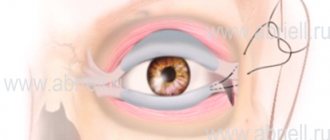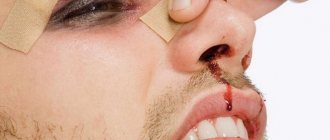Eastern appearance has a number of characteristic features that distinguish it from European ones. Among these are differences in the structure of the eyes. Mongoloid type eyes have no fold in the upper eyelid, an increased amount of adipose tissue on it, and the lacrimal tubercle in the inner corner is covered with a fold of skin. Oriental eyes are no smaller in size than European ones, but the listed features together create the same notorious “narrow eyes” effect.
The fashion for European appearance has led to an increase in demand for an operation called sangapuri. This type of blepharoplasty allows you to correct the typical features of Asian eyes and give them a more European appearance. Unlike other types of blepharoplasty, which are mostly sought after by patients over 45 years of age, sangapuri is popular among young people.
Indications for plastic surgery
In plastic surgery, the main indication for intervention is the patient’s desire to change his external features and achieve an aesthetic ideal. Asian eye surgery was no exception. For the surgeon to prescribe a correction, a request from the patient and the absence of contraindications is sufficient.
The main disadvantages that patients seek to get rid of with the help of a surgeon are the aforementioned lack of folds on the upper eyelid, epicanthus and excess adipose tissue. The patient’s desire to make his appearance more Caucasian is the main indication for surgery.
There are practically no medical indications for this type of plastic surgery. Although in some cases, sangapuri can also be used by people who do not belong to the Mongoloid race, but have individual characteristics of the structure of the eyelids. Sometimes a drooping eyelid can limit the normal field of vision; in this case, surgery may be prescribed for medical purposes.
Sangapuri is intended for people with pronounced features of the Mongoloid structure of the eyelid.
Forecast
After a properly performed operation, patients do not need correction. Complications are rare and include:
- hematoma;
- dry eye syndrome;
- conjunctivitis;
- lacrimation;
- burning.
Rarely, suture dehiscence or lower eyelid inversion occurs. If you follow all the specialist’s recommendations at the rehabilitation stage, complications, as a rule, do not arise.
It is very important to choose a surgeon responsibly. Lack of qualifications can result in displacement of lacrimal openings, asymmetry of the eyes, blepharoptosis, and slow healing of postoperative scars.
(1 ratings)
Contraindications
Eyelid correction is not considered the most difficult type of surgery, but it is still a full-fledged operation. Therefore, plastic surgery has a number of contraindications. Basically, these are typical contraindications for all surgical interventions:
- diabetes,
- disorders of the thyroid gland,
- acute stage of chronic disease,
- presence of infection or inflammation,
- cardiovascular diseases,
- bleeding disorder,
- oncology.
The operation is also not performed on persons under 18 years of age, pregnant or breastfeeding women, or women during menstruation. Specific contraindications include eye diseases (conjunctivitis, dry eye syndrome) and skin diseases (dermatitis, herpes in the eyelid area).
Some contraindications are temporary, and in this case, after they are eliminated, the operation becomes possible. If the condition is lifelong, then plastic surgery cannot be done.
Indications and contraindications
Along with aesthetic factors that encourage patients to go under the knife, there are others:
- a huge number of wrinkles in the lower eyelid area;
- severely overhanging skin above or below, which interferes with good vision;
- drooping corners of the eyes, which make the facial expression sad, gloomy;
- protrusion of tissues (fat bags).
The popularity of the procedure is also explained by the canons of Asian culture: among these peoples, eyes with a double upper fold are considered beautiful.
The operation has contraindications, including:
- endocrine diseases (diabetes mellitus, thyroid problems);
- poor blood clotting;
- increased pressure (both intraocular and arterial);
- oncology;
- some diseases of the organs of vision;
- diseases of the lungs and other vital organs.
It is not performed during menstruation in women or during periods of exacerbation of infectious diseases, as well as in cases of severe swelling in the area under the eyes. In the latter case, the cause is first identified and eliminated, and then the operation is performed. If the cause is not eliminated, the result will not last long.
Preparation
Any surgical intervention requires a preliminary examination of the patient. Passing tests and diagnostics will help determine the presence or absence of contraindications and make a decision on the possibility of correction. To obtain admission, you must pass general tests, biochemistry, coagulation tests, and tests for infections. It is also necessary to undergo an ECG and fluorography, determine the blood type and Rh factor. A consultation with an ophthalmologist is required; in some cases, additional consultations with other specialists may be prescribed.
With the approval of the doctors, a date for the planned surgery is set. It is strongly recommended to give up alcohol and cigarettes 3-4 weeks before the date. 1-2 weeks in advance - stop taking hormonal and blood thinning medications, if any. It is advisable not to use cosmetics for 1-2 days, and not to eat or drink 8 hours before surgery.
How to do blepharoplasty in Singapore
The operation with an incision consists of several stages:
- Local anesthesia or general anesthesia is used. Most often, general anesthesia is used for blepharoplasty, but if the amount of work is small or there are contraindications, local anesthesia will be sufficient;
- During surgery, the doctor makes a dissection of the eyelid along the edge of the eyelashes. Excess fat tissue is removed through it, after which the edge of the lower incision is sutured to the edge of the upper incision and the aponeurosis of the underlying muscle. At the end of the exposure, another suture will be placed on top of the right fixation;
- If it is necessary to remove the epicanthus, the skin next to the nose is excised and excess overhanging tissue is removed. If there are indications, then a small part of the orbicularis oculi muscle and the fat layer are excised. After which the incision is stitched;
- The next step is to remove the fatty hernias. To eliminate them, an incision is made under the edge of the eyelashes outside or inside the eyelid;
- All incisions that were made during blepharoplasty are stitched using a special technology, due to which they cannot be seen after healing.
The duration of the operation is about two hours. If a large volume of work is carried out, or if complications arise, the operation may last longer. If general anesthesia was used, you will need to spend a day in the clinic, under the supervision of a doctor. With local anesthesia, you can go home after 2 hours, accompanied by a relative.
Progress of the operation
Sangapuri is performed in two different techniques. The first technique involves an incision. The incision is made on the upper eyelid in the area where the fold will be formed in the future. The surgeon removes excess fatty tissue, forms a supraorbital fold, fixes the tissue and applies sutures. Then the epicanthus is corrected.
The second technique is called suture. A microscopic incision is made on the inside of the upper eyelid. Then sutures are applied through mini-punctures, stitching all layers of tissue between the muscle tendon and the skin. This operation has a reduced rehabilitation period and a minimum of complications, but is effective only for patients with thin eyelid skin or mildly expressed features of Mongoloid eyes.
The correction takes place under local or general anesthesia and takes no more than 2 hours. After general anesthesia, the patient is recommended to stay in the hospital until the evening; after local anesthesia, you can leave the clinic immediately after the intervention.
general information
The eyes of a person of the Mongoloid race are difficult to confuse with others. They have:
- narrow palpebral fissure;
- weak or absent supraorbital folds of the upper eyelid;
- additional fold in the inner corner of the eyes;
- shallow orbits;
- thick subcutaneous fatty tissue in the upper eyelid area.
In combination with high-set eyebrows, which are also a distinctive feature of these nationalities, the eyes seem less expressive. Singapore allows us to correct the situation, and this is what blepharoplasty of Asian eyelids is called, the goal of which is the “Europeanization” of the eyes of Eastern peoples.
Several years ago, it was done mainly by representatives of the Mongoloid race, who immigrated to Canada, the USA or Europe in order to quickly find a job in a new place or meet a soul mate. In recent years, young people in Japan, Thailand, South Korea, China, Mongolia, who are seeking to get a job in a company that actively cooperates with Europe and America, are increasingly resorting to the procedure.
In the CIS, blepharoplasty of Asian eyes is chosen by Tatars, Kalmyks, Buryats, Bashkirs and other nationalities.
Rehabilitation
In the first time after correction, it will be necessary to treat the injured area. These could be drops with an anesthetic effect, mucous moisturizers, or antibacterial drugs. Your doctor will provide you with an exact list of medications.
Only a doctor can prescribe medications and supplements! You absolutely cannot prescribe treatment for yourself.
The general requirements for successful rehabilitation are to protect the eyes and body from stress if possible. In the first 1-2 weeks, you cannot read books, watch TV, sit at the computer or use electronic gadgets (smartphone, tablet, etc.) for a long time. You cannot play sports, allow the body to bend down or make sudden movements, or lift weights.
In order for the incisions to heal quickly and be minimally noticeable, you need to avoid thermal procedures - bathhouse, sauna, hot bath or shower. It is also necessary to protect the skin around the eyes from ultraviolet radiation - do not visit the solarium, and wear sunglasses when going outside. You cannot wear contact lenses or use decorative cosmetics for 1-2 months. To quickly reduce swelling, it is advisable to reduce the amount of salty and spicy foods.
Types of blepharoplasty in Singapore
Most plastic surgeons use the following methods when correcting Asian eye shape:
- No cut . During the correction, invisible sutures will be placed inside the eyelid, in their place a connecting fold will be formed, allowing the creation of a supraorbital fold. This correction is suitable only if there is slight drooping of the upper eyelids. This type of blepharoplasty is considered easy, the rehabilitation period is short, and there are practically no complications;
- With a cut . During this type of surgery, the plastic surgeon makes incisions with a scalpel on the upper eyelid and excises fat deposits and excess skin, creating a crease. This type of eye shape correction helps create a clear effect. However, it is fraught with unpleasant consequences, and rehabilitation takes longer than described above.
results
All prohibitions and restrictions are only temporary. If the patient responsibly followed the instructions of his surgeon, the result of sangapuri will be of the highest quality. The final effect of the operation is a more expressive, open look, coupled with the elimination of typical Mongoloid features. Appearance becomes closer to Caucasian.
It is worth noting that it is impossible to return Asian eyelids after oriental blepharoplasty. Therefore, before correction, you should think carefully about the feasibility. But if your own appearance causes significant psychological discomfort, then getting plastic surgery is a positive decision. After all, being in harmony with yourself and your body is the main thing.
Prohibitions on blepharoplasty
There are certain contraindications to blepharoplasty for Asian eyes:
- dry eyes;
- oncological diseases;
- increased arterial and intraocular pressure;
- pathologies of the circulatory system, in the presence of problems with blood clotting;
- diseases of the endocrine system
Temporary contraindications are:
- herpes around the eyelids;
- irritation;
- dermatitis;
- conjunctivitis
Results of Asian blepharoplasty
The rehabilitation period lasts no more than two weeks. The scars are located in the folds of the eyelids, become lighter over time, and about a month after blepharoplasty they are almost impossible to see. You can fully see the results of eyelid surgery no earlier than six months after the operation. During this period, the tissues will be restored, the swelling will completely disappear, and the new shape of the eyes will be fully fixed.
Non-surgical thread blepharoplasty Singapore reviews
Victoria, 25 years old
I have narrow eyes, which I inherited from my father. I have had complexes all my life, and at school I was called a lot of names. I finally decided to have eyelid surgery, fortunately everything is being done now. I had to refuse the operation because I cannot tolerate anesthesia. I found a good clinic where they offered me eyelid surgery using Singapore threads. It was tempting, both in terms of price and rehabilitation time. But after performing the procedure, something happened. A week after the correction, my thread really started to stick out, it was noticeable. I went to the clinic, where they told me that it was my fault, I still didn’t understand why. As a result, I had to remove these threads altogether in another place. The eyes and eyelids were swollen for a long time, but overall they were not damaged. Now I'm looking for an alternative, I won't risk it anymore.
Question answer
Does the eye size become larger after surgery?
Plastic surgery does not involve changing the size of the eyes; they may look more expressive and larger after correction, as a result of a change in shape.
How to reduce recovery time?
Rehabilitation will become much shorter if the patient follows all the doctor’s recommendations, both before and after blepharoplasty. According to the doctor’s decision, you can use special eyelid masks, attend physical procedures, or use the services of a massage therapist. All these actions will help improve blood flow and tissue regeneration.
Whether or not to have blepharoplasty is your decision. In our article, we described the indications for the procedure, possible risks, and answered the most common questions from patients. With coordinated work between the plastic surgeon and the patient, the result of the operation will be positive, and you will become the owner of a new appearance.
